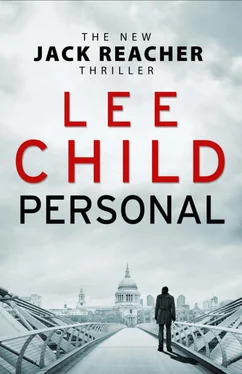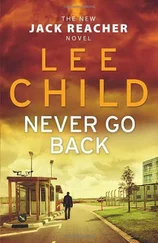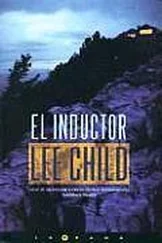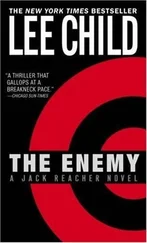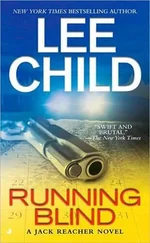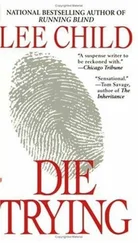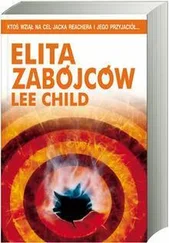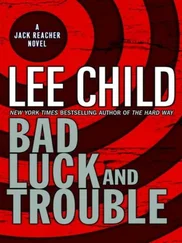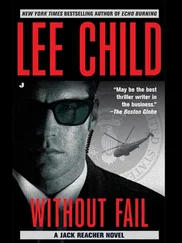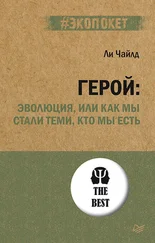I said, ‘We need a container.’
Casey Nice said, ‘What kind?’
‘Just some little thing.’ I pointed below the chipped and cratered rocks. ‘We should take some dust with us. For the gas chromatograph. We need to know if they’re the same bullets.’
She patted her pockets, and I saw her hit a possibility, and discount it, and then come back to it when she ran out of alternatives. She looked at me, a little embarrassed.
I said, ‘What?’
She said, ‘I have a pill bottle.’
‘That should work.’
She put her hand in her pocket and took out a small orange bottle with a label. She popped the top and spilled a bunch of pills into her palm. She shovelled the pills back in her pocket loose, and she put the top back on the empty bottle, and she tossed it to me.
‘Thanks,’ I said. I brushed dust and grit and dirt into piles, and pinched it all up with finger and thumb, and dropped it in the bottle, over and over again, a little at a time. I had no real idea what a gas chromatograph was, except I was sure it was very sophisticated and could work with the tiniest of samples, but we needed lead fragments, and I wanted to increase the odds. So I kept on pinching and dropping until the bottle was more than half full, and then I put the top back on, and I put the bottle in my pocket, and I said, ‘OK, now we’ll go break into his house.’
Which we did by kicking down the door. Which was easy enough. A question of force, obviously, which is the product of mass times velocity squared, and that squared part puts a premium on speed, not weight. Bulking up by twenty pounds at the gym is good, because it throws an extra twenty pounds in the mix, but moving your foot 20 per cent faster is better. It does you 400 per cent of a favour. Because it gets squared. Which means multiplied by itself. Money for nothing. Like in baseball. You can swing a heavy bat slow or a light bat fast, and the slow heavy bat gets you a high fly to the warning track, and the light fast bat puts the ball in the bleachers. A principle too often forgotten. People treat doors with too much respect. They eye them warily and shuffle close and then do little more than press their soles against the wood.
Not me. We chose the rear door over the front, because it looked one category down in certain respects, like the thickness and the hinges and the lock, and the run-up would be longer back there. I needed three clear strides. Which I took at a comfortable walk. Nothing dramatic was required. As long as I was moving, then my upper leg could move faster, and my lower leg faster still, and my foot even faster, and then my heel could punch through the lock like it wasn’t even there.
Which is what happened. I caught the door on the bounce and Casey Nice stepped in ahead of me. To a kitchen. I stepped in behind her and saw countertops and cabinets, and a metal sink, and a refrigerator the colour of an avocado pear, and a range made of pressed metal, all curved and swooping, like a 1950s car. The countertops were dull, and the cabinets were painted a miserable colour that might have been green or brown or anywhere in between.
The air was still, and it smelled dry, and there were no real kitchen odours. No onions, no garbage. Just a kind of neutral, inorganic nothing.
The air smelled old.
Casey Nice moved towards the hallway door and said, ‘Ready?’
‘Wait,’ I said. I wanted to listen, for the low vibration any living thing gives out. But I heard none. The house was silent and empty. Forlorn, even, as if it had been empty for a good long time.
I said, ‘I’ll check the living room. You check the bedrooms.’
She went first, out into a hallway, which was panelled with plywood stained a dark sludge colour, and she glanced around and headed left, so I went right, and found a living room with an L-shaped dining nook. It was a well-built room, and graceful in its proportions, but it was heavy with dark wood, and what wasn’t dark wood was covered in bland vinyl wallpaper, like a mid-priced hotel. The furniture was a sofa and an ottoman and two armchairs, all in brown corduroy, all well used. There were two side tables, and no television. No newspapers, either, or magazines. Or books. There was no telephone. No old sweater dumped over the arm of a chair, no dried-up beer glass, no half-full ashtray. Nothing personal at all. No real sign of life, except the wear and tear and the permanent slumped impressions in the sofa.
From the far end of the house Casey Nice called out, ‘Reacher?’
I called back, ‘What?’
‘You really need to see this.’
Something in her voice.
I said, ‘What is it?’
‘You need to see it.’
So I headed for the sound of her voice, and stepped into a room, and came face to face with myself.
IT WAS A photograph, obviously. Black and white, of my face. But it had been blown up life size. In a commercial photocopier, probably. Almost to the edges of a sheet of letter-size paper. Which had been pinned to the wall with thumbtacks. Six feet five inches from the floor. Below it more sheets of paper had been pinned to the wall, like tiles, overlapping in places, shaping a neck, shoulders, a torso, arms, legs, and on them the rest of me had been sketched in by hand, with a black permanent marker, to match the sooty tone of the Xerox of my face. A life-size human, right there, standing still, head up, thumbs forward, solidly planted in shoes drawn to the last detail, even the laces.
It was a pretty good impression, overall. Wouldn’t have fooled my mother, but it was close enough.
It had a knife in the chest. About where my heart would be. A big kitchen item, maybe ten inches long, buried five inches in the wall board.
Casey Nice said, ‘There’s more.’
She was standing in an alcove, maybe meant for a bed. I stepped over and found the back wall covered with papers. All about me. At the top was the same photograph, life size. Below it was where it had come from. Which was the bio page from my army personnel file, with my thumbnail headshot glued in the top right corner, crisply Xeroxed. Below the bio page were dozens of other pages, all Xeroxed, all pinned up, packed close together, ordered in some way.
Chosen in some way.
They were my failures. They were after-action reports, mostly, admitting missed clues, and missed connections, and risks gone bad. Thirty whole pages were about Dominique Kohl.
My failures.
Casey Nice asked, ‘Who was she?’
I said, ‘She worked for me. I sent her to arrest a guy. She was captured, mutilated, and killed. I should have gone myself.’
‘I’m sorry.’
‘So am I.’
She studied the pages for a minute and said, ‘You couldn’t have known.’
I said, ‘She was exactly your age.’
She said, ‘There’s more, I’m afraid.’
She led me to another room, where I saw on a table what I guessed was a homemade rack, good for pinning paper targets on, good for propping on a rocky shelf fourteen hundred yards from the rifle. Admirable initiative, except the paper targets were my photograph. Same deal. Life size. There were two stacks. One used, one not. The unused examples were what I had seen. My face, a sooty Xerox, right to the limits of letter-size paper. The used examples were even less pretty. A lot of them were more or less completely shredded, either by the massive trauma of the .50-calibre round, or by fragments blasted back from the cratered rocks behind, or by both. But some examples had held up better. One was unmarked except for a neat half-inch hole just below my right cheekbone. Another had a hole on the right corner of my mouth.
From fourteen hundred yards. Left and a little low, but still, good shooting.
He got better.
Читать дальше
